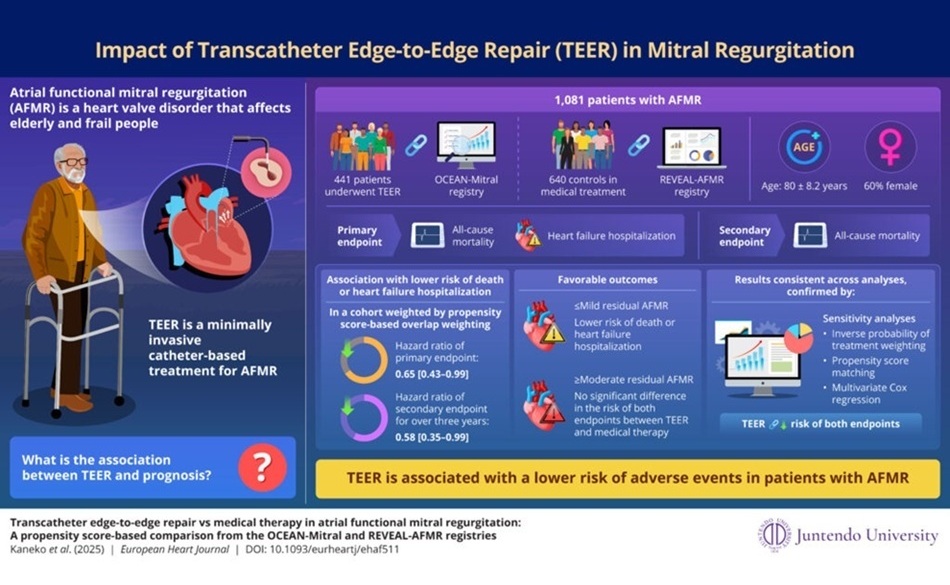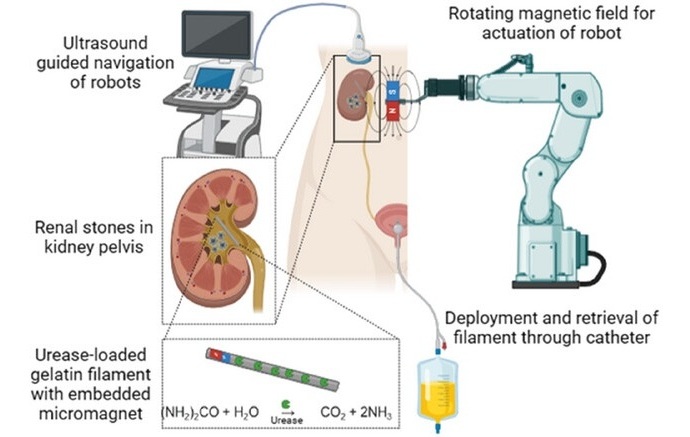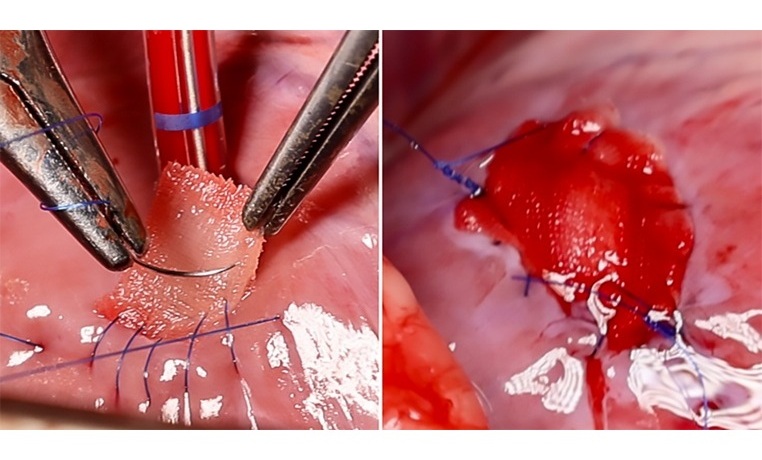Machine Learning Delivers Personalized Oxygenation for Patients on Ventilators
|
By HospiMedica International staff writers Posted on 10 Jun 2024 |

Supplemental oxygen is one of the most commonly prescribed treatments globally, with between 13 and 20 million patients each year needing oxygen supplied via mechanical ventilation. Mechanical ventilation is a critical life support technology that facilitates the movement of air into and out of the lungs, functioning similarly to a bellows. Modern ventilators are a significant advancement from the typically envisioned old “iron lung” machines; today's devices are sophisticated, compact digital machines that administer oxygen through a small plastic tube inserted into the throat. Despite these technological improvements, determining the appropriate oxygen level for each patient continues to be largely based on estimation. Clinicians set oxygen levels using devices that measure SpO2 saturation, indicating the oxygen saturation in a patient's blood, yet previous studies have not conclusively determined whether higher or lower SpO2 targets are more beneficial for patients.
To remove the guesswork out of ventilation, a team from The University of Chicago Medicine (Chicago, IL, USA) has employed a machine learning model to explore how different oxygen levels might affect outcomes based on individual patient characteristics. Their findings suggest that personalized oxygenation targets could significantly lower mortality rates, potentially revolutionizing critical care practices. Earlier studies by various research groups attempted to determine if higher or lower oxygen levels were more advantageous, but generally, these studies did not yield definitive results. The researchers at UChicago Medicine proposed that the neutral outcomes of these trials might not mean oxygen levels are irrelevant to patient outcomes but rather that the effects of different oxygen levels vary from patient to patient, averaging out to zero effect in randomized trials.
As personalized medicine gains popularity, there is an increasing interest in leveraging machine learning to predict optimal treatments for individual patients. In the area of mechanical ventilation, these predictive models could potentially determine the ideal oxygen saturation for a patient based on specific characteristics such as age, gender, heart rate, body temperature, and the reason for ICU admission. The team and their colleagues utilized data from previous randomized trials to develop and refine their machine learning model. After initial development with data from the U.S., the model was applied to patient data from Australia and New Zealand. According to their findings, for patients who achieved the oxygenation levels deemed optimal by the model, there was an overall mortality reduction of 6.4%. It’s important to note that outcomes cannot be universally predicted based on a single characteristic — for instance, not all patients with brain injuries will benefit from lower oxygen levels, despite data trends suggesting this — creating the need for a comprehensive tool like the machine learning model that integrates diverse patient data.
Despite the complexity of the algorithm, the input variables are common clinical parameters, making it simple for healthcare teams to use such tools in the future. At UChicago Medicine, algorithms are already integrated directly into electronic health record (EHR) systems to support various clinical decisions. The researchers envision that mechanical ventilation could be managed in a similar manner. For hospitals lacking the resources to integrate such advanced machine learning tools into EHRs, there is also the possibility of developing a web-based application that would allow clinicians to input patient characteristics and receive predictions, functioning like an online calculator. Extensive validation, testing, and refinement are required before these applications can be clinically implemented, but the potential benefits justify the investment in further research.
“If the results are true and generalizable, then the consequences are staggering,” stated Derek Angus, MD, a critical care expert. “If one could instantly assign every patient into their appropriate group of predicted benefit or harm and assign their oxygen target accordingly, the intervention would theoretically yield the greatest single improvement in lives saved from critical illness in the history of the field.”
Related Links:
The University of Chicago Medicine
Latest Critical Care News
- AI-Enhanced ECG Identifies Patients at Future Risk of Heart Block
- Bee-Stinger-Inspired Microneedle Delivers Drugs, Stimulates Healing and Monitors Wounds
- Blood Markers and ECG Patterns Could Provide Early Warning for Hidden Heart Risks in ICUs
- Multidimensional Diagnostic Approach Identifies Previously Missed At-Risk COPD Patients
- AI Tool Predicts Markers of Alzheimer’s Disease
- New Flexible Material Paves Way for Self-Powered Wearable Sensors
- AI Identifies Hidden Heart Valve Defects from Patient’s ECG
- Brain-Based Biomarker Could Predict Alzheimer’s Disease Progression
- AI Model Detects Hidden Diabetes Risk by Reading Glucose Spikes
- Wearable Wound Monitoring Device to Improve Chronic Infection Care
- Swallowable Biosensor Pill Tracks Inflammatory Bowel Disease
- World's First Wearable-Powered System Predicts Acute Inflammation With 90% Sensitivity
- Ambient Light Powered Wireless Wearable Platform Enables 24-Hour Health Monitoring
- Wearable Microneedle System Monitors Glucose and Drug Levels in Real Time
- Patient Monitoring System Significantly Reduces Severity of IV Injuries in NICU
- New Ventilation Mode Could Improve Outcomes for Critically Ill Patients
Channels
Surgical Techniques
view channel
Diamond-Based Sensor Pinpoints Metastasized Cancer for Surgical Removal
A cancer diagnosis becomes most challenging when tumor cells metastasize and spread to other organs, most often through the lymph nodes and the lymphatic system. Detecting whether cancer cells are lodged... Read more
Minimally Invasive Valve Repair Improves Survival in Elderly AFMR Patients
Atrial functional mitral regurgitation (AFMR) is a condition in which the mitral valve does not close properly, causing blood to leak backward into the atrium. It commonly affects frail or elderly patients... Read more
Tiny Soft Robots Dissolve Painful Kidney Stones with Targeted Drug Delivery
Kidney stones are solid deposits that form inside the urinary tract, affecting about 12% of people and often recurring. Current treatments for uric acid stones include painkillers and oral dissolving medication,... Read morePatient Care
view channel
Revolutionary Automatic IV-Line Flushing Device to Enhance Infusion Care
More than 80% of in-hospital patients receive intravenous (IV) therapy. Every dose of IV medicine delivered in a small volume (<250 mL) infusion bag should be followed by subsequent flushing to ensure... Read more
VR Training Tool Combats Contamination of Portable Medical Equipment
Healthcare-associated infections (HAIs) impact one in every 31 patients, cause nearly 100,000 deaths each year, and cost USD 28.4 billion in direct medical expenses. Notably, up to 75% of these infections... Read more
Portable Biosensor Platform to Reduce Hospital-Acquired Infections
Approximately 4 million patients in the European Union acquire healthcare-associated infections (HAIs) or nosocomial infections each year, with around 37,000 deaths directly resulting from these infections,... Read moreFirst-Of-Its-Kind Portable Germicidal Light Technology Disinfects High-Touch Clinical Surfaces in Seconds
Reducing healthcare-acquired infections (HAIs) remains a pressing issue within global healthcare systems. In the United States alone, 1.7 million patients contract HAIs annually, leading to approximately... Read moreHealth IT
view channel
Printable Molecule-Selective Nanoparticles Enable Mass Production of Wearable Biosensors
The future of medicine is likely to focus on the personalization of healthcare—understanding exactly what an individual requires and delivering the appropriate combination of nutrients, metabolites, and... Read more
Smartwatches Could Detect Congestive Heart Failure
Diagnosing congestive heart failure (CHF) typically requires expensive and time-consuming imaging techniques like echocardiography, also known as cardiac ultrasound. Previously, detecting CHF by analyzing... Read moreBusiness
view channel
Bayer and Broad Institute Extend Research Collaboration to Develop New Cardiovascular Therapies
A research collaboration will focus on the joint discovery of novel therapeutic approaches based on findings in human genomics research related to cardiovascular diseases. Bayer (Berlin, Germany) and... Read more
















